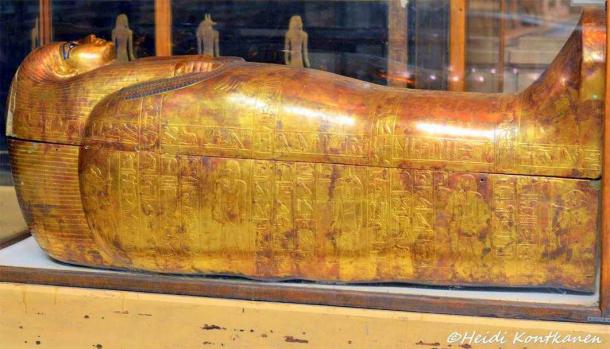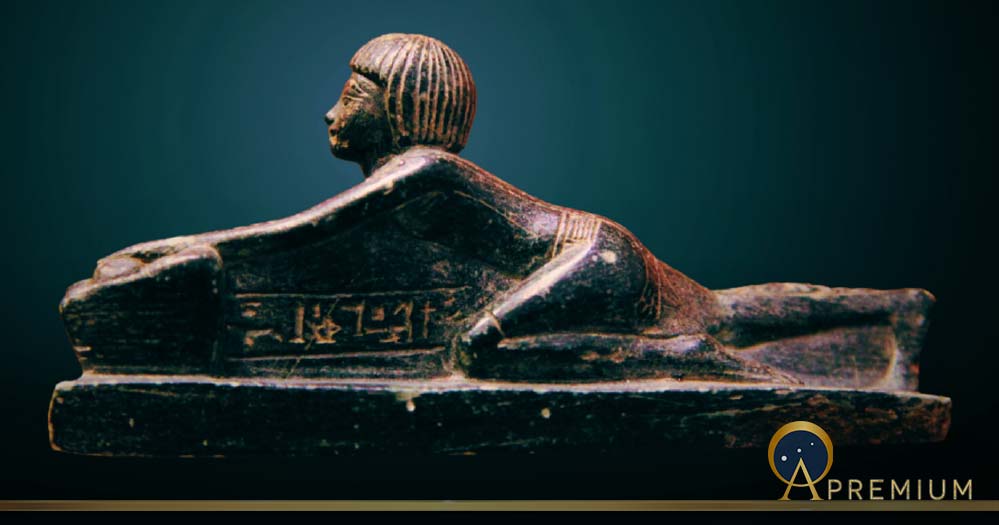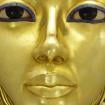On The Trail Of The Mysterious Crown Prince Thutmose: The King Who Was Not To Be – Part I
Amenhotep IV, the youngest-known son of Pharaoh Nebmaatre Amenhotep III-heqa-Waset, ascended the throne at the height of Egypt’s golden age. The seeds for that efflorescent era of the Eighteenth Dynasty were sown under their great ancestor, Menkheperre Thutmose III, regarded in modern times as ‘the Napoleon of Egypt’. The junior Amenhotep was an unlikely successor, having been thrust into the spotlight owing to the untimely demise of his elder brother and designated Crown Prince, Thutmose, in the third and final decade of Amenhotep III’s stupendous reign.

Limestone relief of Crown Prince Thutmose standing behind his father, Amenhotep III, in the role of high priest. Saqqara. Neues Museum, Berlin. (Merja Attia)
Thutmose was certainly groomed from childhood to one day take over the reins of power when his father became one with the gods. A limestone relief from the Shrine of Apis at Saqqara, now at the Neues Museum, Berlin, shows the prince standing behind the pharaoh making offerings in the role of High Priest of Ptah at Memphis, known anciently as Men-nefer.

Ruins of the pillared hall of Ramesses II at Mit Rahina/Memphis. (Public Domain)
This place of pilgrimage, located at the mouth of the Nile Delta, was Egypt’s first capital and a renowned trading hub as well. It is of significance that Thutmose held an esteemed office here whilst still a boy, for it enabled him to operate in the cult center of Ptah — the patron deity of craftsmen, who myths proclaimed had brought the world into being by his thoughts and words.
Crown Prince Thutmose’s maternal uncle, Aanen (alternatively Onen) – whose titles included Chief Seer in the Temple of Re at Karnak, Chancellor of Lower Egypt, Second Prophet of Amun, Sem-priest of Heliopolis, and Divine Father – may have played an influential role in shaping his spiritual outlook during his formative years.

The fine detail of the inner gilded coffin of Tjuyu, the mother of Queen Tiye and grandmother of Akhenaten, shows the supreme skill of ancient Egyptian craftsmen. This is the most perfectly preserved and beautiful of the series of seven anthropoid coffins of Tuya. Except for the eyes and the necklace, it’s entirely covered in gold. KV46, tomb of Yuya and Tjuyu. Valley of the Kings. Egyptian National Museum, Cairo. (Heidi Kontkanen)
As the brother-in-law to the monarch, Aanen held considerable clout in the court of Amenhotep III. This sibling of the Great Royal Wife Tiye is attested on the coffin and sarcophagus of their mother, Tjuyu.
Like this Preview and want to read on? You can! JOIN US THERE ( with easy, instant access ) and see what you’re missing!! All Premium articles are available in full, with immediate access.
For the price of a cup of coffee, you get this and all the other great benefits at Ancient Origins Premium. And - each time you support AO Premium, you support independent thought and writing.
Independent researcher and playwright Anand N. Balaji, is an Ancient Origins guest writer and author of Seeking Smenkhkare.
Top Image: A small schist statuette shows Prince Thutmose as a miller grinding grain. Louvre Museum, Paris. Design by Anand N. Balaji (Public Domain); Deriv.
The author expresses his gratitude to Prof Aidan Dodson, Prof Joann Fletcher, Dr Stephen Buckley, Dr Nicholas Reeves and Professor Jiro Kondo, Waseda University, Tokyo, Japan for their invaluable inputs in this series.
[The author thanks Heidi Kontkanen and Merja Attia for granting permission to use their photographs. Photographic records of the excavation of Tutankhamun’s tomb by Harry Burton in the public domain can be viewed here.]




















Comments
The gilded coffin of Tjuyu (photo from above - https://www.ancient-origins.net/sites/default/files/styles/large/public/...) was OBVIOUSLY designed to be stood upright. Many of similar design and shape were made from STONE, to be similarly STOOD, not laid flat, but most were made of wood. Just look at the over-sized foot base. No question – NOT designed to be laid down.
So you wonder two things: 1) What was the purpose of that very common design of the times, for a stone or wood box like that to be stood up in their subterranean chambers, clearly ornamental, but with some functional purpose, such as possible a ‘memory box’ for mementos of deceased family members?; and 2) Why do they try TOO HARD to have us believe the silly idea that these boxes were laid flat with dead bodies in them?
Nobody gets paid to tell the truth.